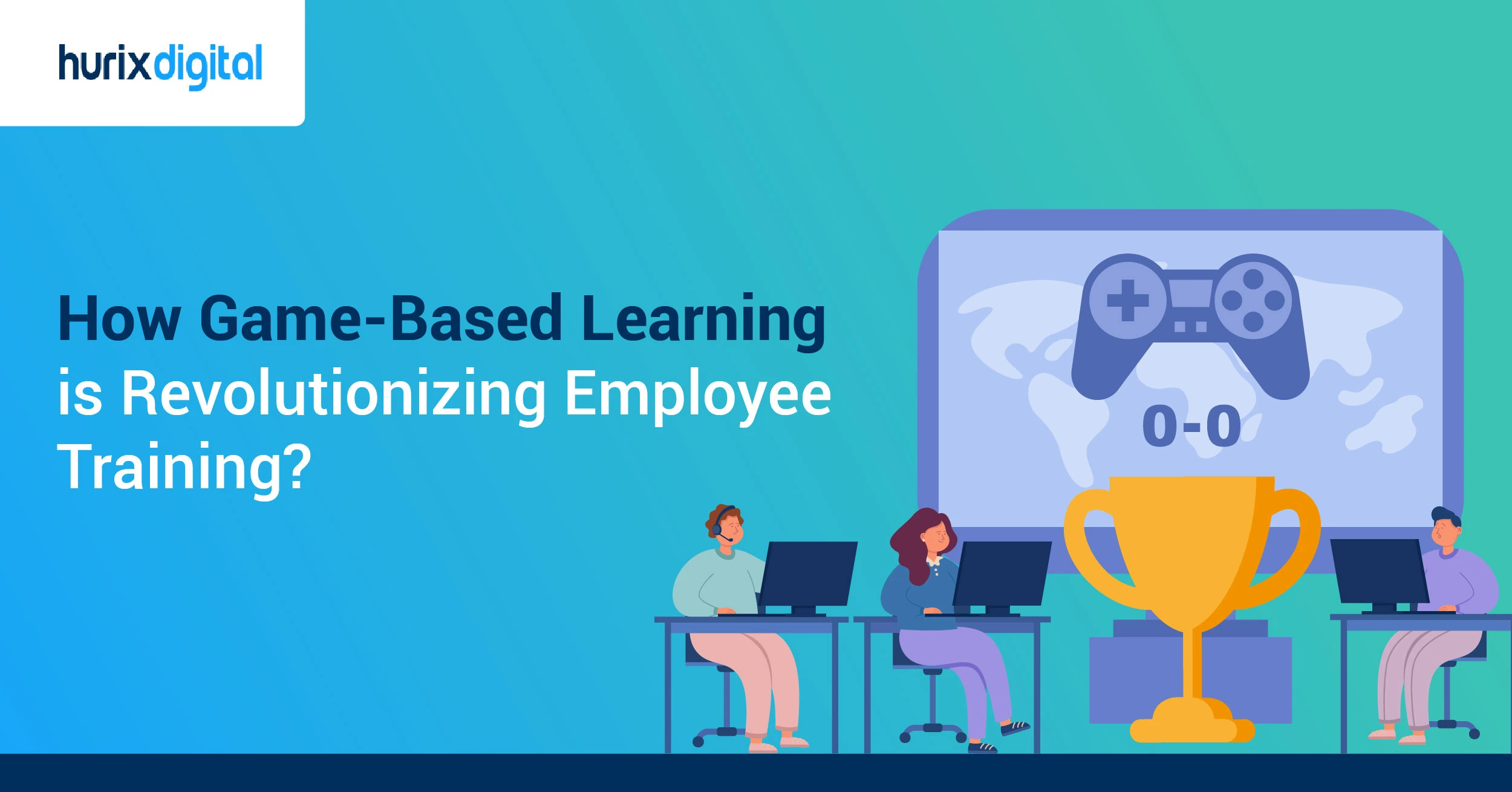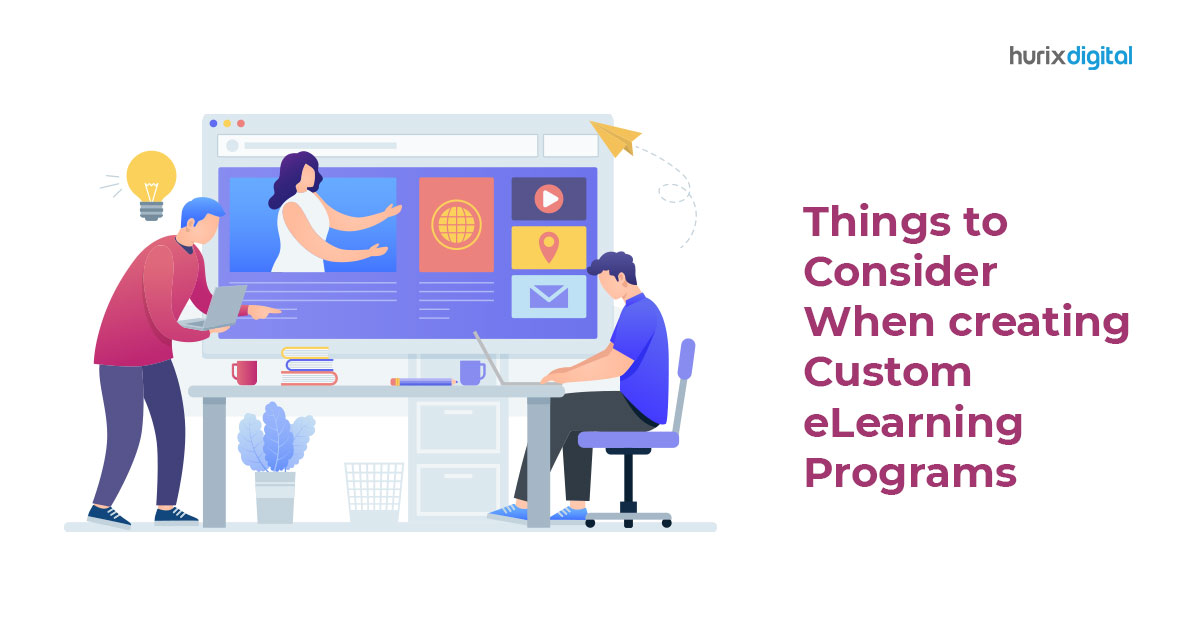
Creating Impactful eLearning Courses: A Step-by-Step Approach
You have a Team Offline and a Team Online. While Team Offline is receiving L&D content through classroom training, Team Online receives eLearning training through online content available at all times. Here’s how both the teams learn job-related content:
For Team Offline, the HR arranges a classroom training by:
- Inviting a Trainer
- Inviting a Subject Matter Expert
- Arranging a classroom or boardroom
- Arranging refreshments during the training
- Clearing the schedule of the team and sending calendar invites
For Team Online, the HR uploads the content to the LMS and employees access it whenever they have time – even from home.
Table of Contents:
- Which of the Two Methods Do You Think Is More Feasible and Effective?
- Make an eLearning Training Course in 5 Easy Steps
- How Can Enterprises Develop Effective eLearning Training Content?
- Conclusion
Which of the Two Methods Do You Think Is More Feasible and Effective?
L&D initiatives are crucial for the growth of employees. eLearning offers the right training and development opportunities to the staff without additional costs. According to a study, the eLearning market across the globe will touch USD 325 billion by the year 2025. This number was just USD 107 billion in the year 2015.
As the eLearning market is constantly growing, so is the need for customized content and strategic learning. The primary goal of the employers is to create training content based on the competency of employees, market needs, and personal needs of the employees.
Also Read: Best Elearning Courses for You: Custom Content or Off-the-Shelf Courses
However, it is necessary to keep in mind that the right eLearning training strategy requires the proper goals and objectives. You need to evaluate your organizational needs to move in the right direction, create the right content, and deliver it through the right medium.
For example, if you are developing a course for developers, you can’t give them theoretical knowledge. You need to give them some practical knowledge.

So, let’s move forward and understand the importance of eLearning training and how you can create an eLearning course with the right goal. eLearning Content Development for Effective Training eLearning training is not only beneficial and cost-effective for the business, but also it comes with an array of opportunities. Here’s more on how to optimize your eLearning ROI.
Let’s deep dive into why you need eLearning:
- You always have the option to customize your elearning solutions. For example, you can make an online repository and give access to your employees, or you can gamify the content to improve the engagement of employees. Based on the needs of your business, it is possible to customize and tweak your solutions.
- One of the most practical options that eLearning gives is the ability to offer L&D modules across multiple locations. You can create a central repository for every office branch and provide unified content to employees across every location. Here’s more on How to Transform Employee Training with Bespoke L&D Solutions
- You can offer on-demand learning. Meaning your employees can access content whenever they want, wherever they want.
Many organizations conduct surveys before creating their eLearning course. They send this survey to employees to understand their requirements and preferences. The results help the L&D team to develop a feasible, preferred, and optimum eLearning training course.

Make an eLearning Training Course in 5 Easy Steps
Although we believe every organization has a perfectly synchronized process of developing courses, you can follow these common steps for better outcomes.
Step #1: Start with the Training Needs Analysis (TNA)
The major step for developing an eLearning course is to conduct a requirements analysis.
Here, you have to analyze the following factors:
- The current abilities of your employees.
- The courses that can be taught online effectively.
- The content that can’t be moved online.
- The efficiency and current acceptance of eLearning in the workplace.
- The purpose or major goal of learning.
Step #2: Thoroughly Comprehend the Content
Creating valuable yet simple content ensures the consistency of the eLearning course.
Hence, audit your content and make sure:
- It is simple to understand minimal usage of complex words; except in technical content.
- Delivers extensive, detailed knowledge as per the competency level.
- Includes relevant graphics and visuals to make it more engaging.
- Includes some survey data to make the content more valuable and worthy.
- Includes a questionnaire to judge the received knowledge and encourage learning.
Lastly, always confirm that your content is authentic and not outdated.
Step #3: Clarify Learning Objectives
You may have already defined the goal of the eLearning course in the first stage. In this stage, you need to define the goal of a particular subsection. Set quantifiable mini-goals to evaluate the performance difference based on the knowledge delivered through content.
In fact, this is a great time to look back on your major eLearning course goal to confirm that it is measurable and specific.
Step #4: Decide Your Design
Once you have decided all the above factors, focus on the content delivery designs. You have the following options for the same:
Blended learning means mixing two or more of the above methods for learning. Traditionally, it was using the classroom and virtual learning mixture. But, now, it has an extended meaning. You can offer mobile learning, virtual learning, digital learning, and classroom learning, all under blended learning. Here’s a Guide to use Blended Learning for Corporate Training
Step #5: Create a Survey
Create a survey to understand the viability and feasibility of the course. This survey should include questions through which your employees can deliver their feedback. Depending upon the feedback, revisit the above steps and make changes accordingly.
How Can Enterprises Develop Effective eLearning Training Content?
- Set Your Goals: We have already discussed this. Consider why you need eLearning and what steps will help you make the right course.
- Select the Right eLearning Tools: Check the above requirements to understand the type of eLearning tool you need. For instance, some companies require content authoring tools and others prefer a tool which allows customization.
- Fix a Plan: Once you have decided your eLearning tool and goal, pen down the stages. Now, assign a budget to every stage and create a full budget for the project.
Case Study:
How a Global Furniture Giant Trained Their International Frontline Staff with Training Videos
Also Read: eLearning Authoring Tools and Whether You Should Invest in Them
Conclusion
Gradually but progressively, eLearning is becoming the new standard of training. It can help you create valuable content with less effort and more accuracy.
You can allow your employees to access this eLearning training anytime, anywhere. Thereby, also reducing the loss of productivity incurred with classroom learning. Simply go through the checklist above and start preparing your eLearning course.
Unlock the power of effective eLearning content development with Hurix Digital‘s comprehensive solutions tailored for Enterprises, Higher Education, and K-12 Institutions. Elevate your training programs by Booking a Discovery Call with our eLearning experts to explore customized content creation strategies that drive engagement and results.









